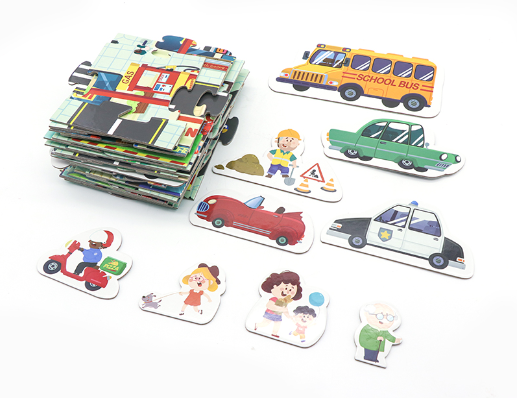Official Guidelines from the US Government: Age-Appropriate Toys for Children
July 06,2023

Introduction
As parents, it is our responsibility to provide our children with toys that not only entertain them but also contribute to their development and safety. The United States government has issued official guidelines to assist parents in making informed decisions when selecting toys for their children. In this blog post, we will delve into these guidelines and explore age-appropriate toys for children.
Infants (0-12 months)
During the first year of life, infants undergo rapid development of their senses and motor skills. Toys for this age group should focus on stimulating their senses and encouraging exploration. Soft toys, such as plush animals, rattles, and textured toys, help infants develop their sense of touch and grasp reflex. Hanging mobiles with bright colours and gentle music promote visual and auditory stimulation. Teething toys that are safe and non-toxic provide relief for teething infants while also encouraging oral exploration.
Toddlers (1-3 years)
Toddlers are curious explorers who are developing their fine and gross motor skills. Toys for this age group should encourage imaginative play, problem-solving, and physical activity. Building blocks, such as large, colourful blocks, help toddlers develop their fine motor skills, hand-eye coordination, and spatial awareness. Shape sorters that require matching shapes and colours help toddlers develop problem-solving skills and hand-eye coordination. Ride-on toys like tricycles, balance bikes, and push toys promote physical activity and coordination.
Preschoolers (3-5 years)
Preschoolers are becoming more independent and imaginative. Toys for this age group should encourage creativity, social interaction, and cognitive development. Art supplies, such as crayons, markers, and finger paints, allow preschoolers to express their creativity and develop fine motor skills. Age-appropriate puzzles with varying difficulty levels help develop problem-solving skills, hand-eye coordination, and patience. Pretend play sets like play kitchens, doctor kits, and tool sets encourage imaginative play and social interaction.
School-age children (6–12 years)
School-age children are developing their cognitive and social skills. Toys for this age group should promote critical thinking, creativity, and physical activity. Board games that require strategy, problem-solving, and social interaction help develop cognitive and social skills. Science kits and building sets encourage curiosity, critical thinking, and scientific exploration. Sports equipment such as bicycles, balls, and other sports equipment promotes physical activity, coordination, and teamwork.
Teenagers (13+)
Teenagers are entering a phase of increased independence and self-discovery. Toys for this age group should encourage creativity, critical thinking, and personal growth. Art supplies like sketchbooks, paints, and sculpting materials allow teenagers to explore their artistic abilities. Construction sets and robotics kits foster problem-solving skills and technological understanding. Musical instruments provide an outlet for self-expression and creativity.
Conclusion
Selecting age-appropriate toys for children is crucial for their development, safety, and overall well-being. The official guidelines provided by the US government offer valuable insights into choosing toys that align with a child’s age and developmental stage. By following these guidelines, parents can ensure that their children have safe and engaging toys that promote growth, learning, and enjoyment. Let us prioritise the importance of play in our children’s lives and provide them with toys that nurture their development and ignite their imaginations.